Are you thinking of turning your top-performing blogs into videos? If yes, we can help you turn them into engaging videos both with and without using AI tools.
Blogging is a great marketing strategy, but it is becoming more challenging with time.
It is reported that 52% of bloggers say that it is getting harder to engage readers with their content. So, there is a need to make something more engaging than the blog, and creating a video out of the blog is the perfect way to do so.
In this article, we have gathered two different ways to turn your blogs into videos. Let’s dive in to learn more.
Benefits of Turning Blogs into Videos
Before diving into how you can turn your blogs into videos, you should first know why you really should be doing this. Repurposing your content seems easy, but obviously, it will require your time and energy.
Here are some reasons and benefits that prove turning blogs into videos is worth trying:
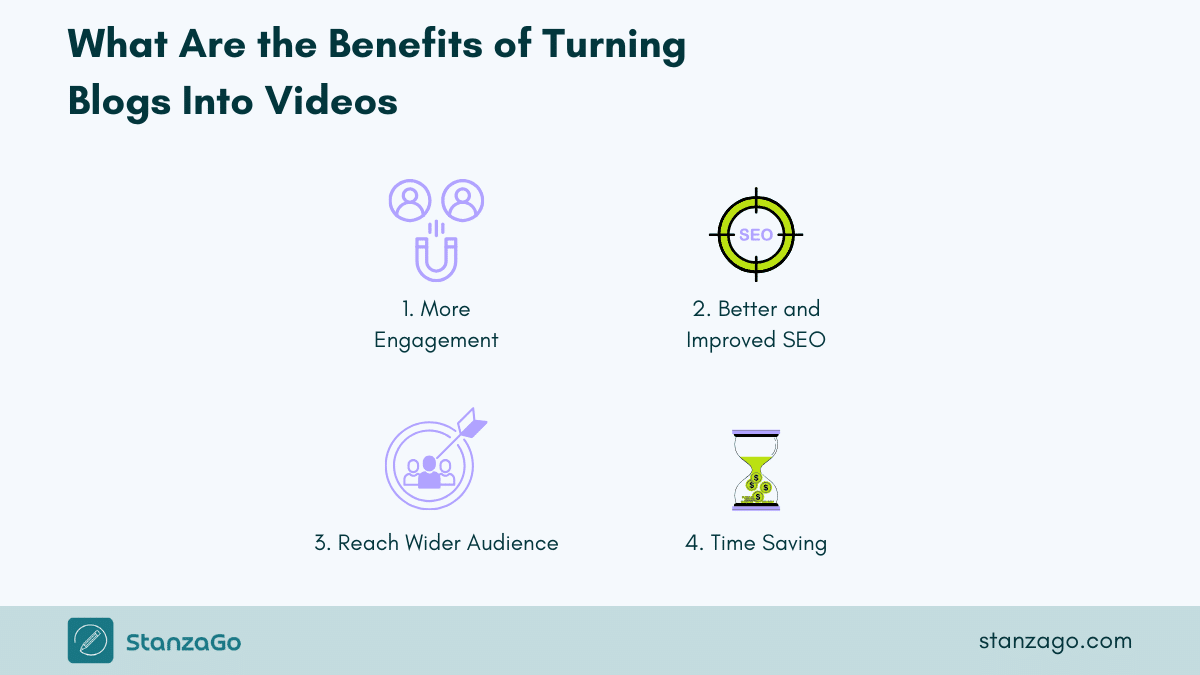
1. More Engagement
Video content is booming these days, it is not only visually appealing but also is much time-saving. The videos that you generate from your blogs engage the user’s eyes in a way that your text can’t do.
Reading an article requires more cognitive attention compared to watching videos. While reading an article, your brain plays images and videos of the text in your head, triggering more cognitive strain.

But when you play videos, it’s not the case; watching videos involves different parts of the brain and is not stressful.
Moreover, video content is a more interesting way to consume content, and your users will be more likely to remember your video content than text. If your video content is fresh and unique, they will end up sharing it also, which means more backlinks and more engagement.
2. Better SEO
Reportedly in a survey, it was reported that 90% of the marketers believe that the video content increases your ROI (Return On Investment).
Making video content is one of the best ways to improve the SEO of your website. As already discussed in the above section the video content on your website keeps your visitors on your website for a longer time and reduces the bounce rate compared to the nonvisual blogs.

Research says that the bounce rate for the video content is 34% lower compared to other content areas of the website. Your website needs to follow SEO best practices when it comes to Google’s rankings and algorithm.
Google Algo is evolving all the time and the SEO community believes that Google cares about video content. You can clearly see this thing in the search results of Google, when you type any query you will see Google displays video carousels and short forms of videos in the results.
So, to improve the SEO and better visibility of your website, you should turn your well-performing blogs into interactive videos.
3. Reach the Wider Audience
Different people like different kinds of content, some prefer reading while others like to watch videos. Research suggests that people retain 95% of the content when they watch it in the form of video compared to the 10% who read it in the form of text.
Upon turning your blogs into videos, you are creating a whole new marketing asset.

You can post this video content as an individual YouTube video. Also, adding this YouTube thumbnail incorporated into your website will increase your visibility in SERPs.
Moreover, the video content is easily shareable across different social media platforms. Not only this, you can post the short parts of your video content to these platforms. This will expose your content and website to a broader audience in multiple forms.
Other than this, if you include subtitles in your video, it even reaches an audience demographically different from you.
4. Time Saving
Making a video out of a blog is not a very heinous job, all you need is a reliable AI tool that will convert your blogs into videos within minutes. This is really fascinating, you do need not to edit it or format it.
This will definitely save a lot of your time which you can utilize to work on other demanding tasks.
These videos not only save your time but also your reader’s time.
When you make well-made videos, they convey information in a more effective and quick way than the text.
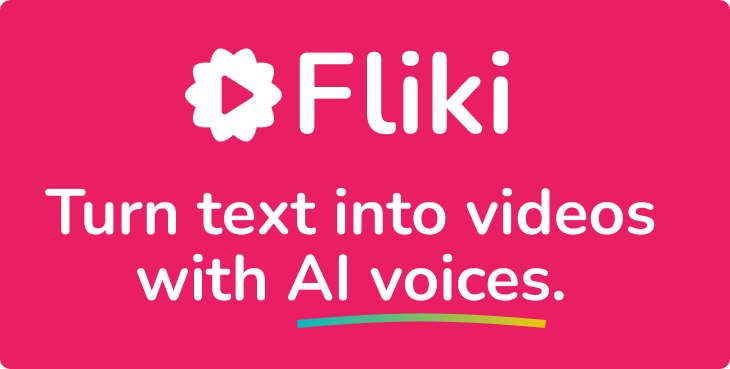
AI Video Generation
Transform Text into Engaging Videos
- Realistic AI voiceovers in 80+ languages
- Access to millions of stock media assets
- Customizable AI avatars
How to Turn Blogs into Videos
Now let’s get started on how you can turn your blogs into videos with and without AI tools.
1. Using AI Tools
To convert your blogs into videos, you first need to decide which AI tool you are going to use. We recommend using Fliki.ai. It is an incredible AI-powered media creation suite that helps you to create high-quality audio and video content.
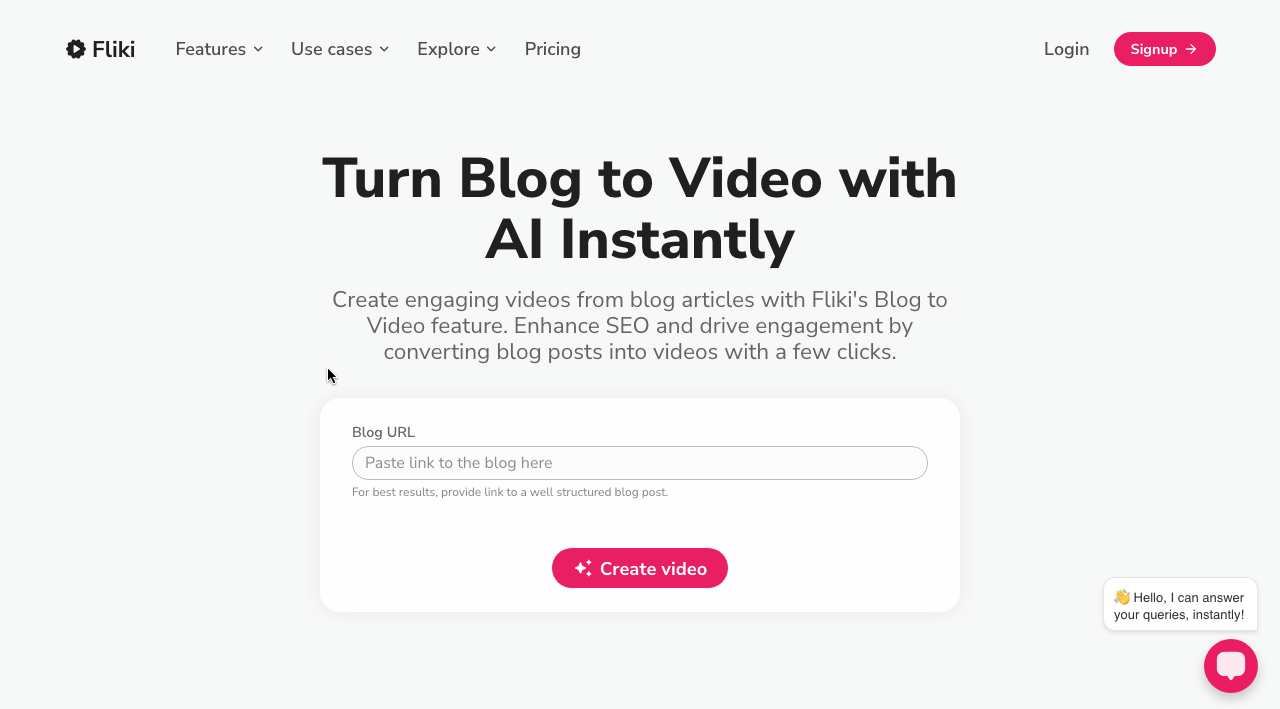
It uses innovative generative AI techniques to transform plain text into engaging voiceovers and videos in minutes.
It is super easy to create stunning videos from texts using Fliki’s text-to-video generator tool. You just need to input your text from the blog in the form of a script and it will transform it into engaging video. It also has editing tools to edit your video the way you want.
Moreover, Fliki provides AI voiceover in more than 75 languages which allows you to give a personal touch to your videos as well as to make your video shareable to a wider audience.
Fliki’s user-friendly interface and media assets help you in increasing the visual appeal of your video efficiently.
Let’s guide you step by step on how to make your very first video from the blog using Fliki.
Create a Video File From the Blog URL
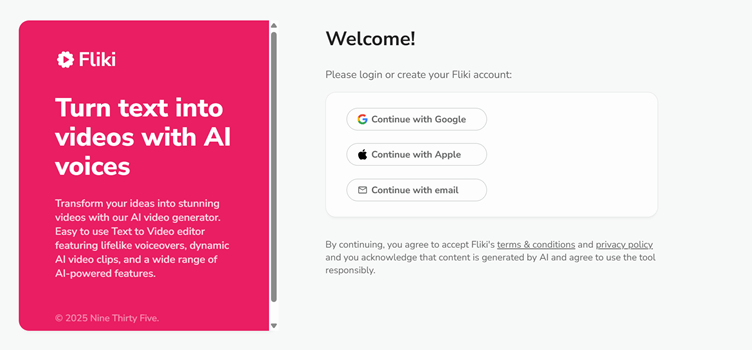
Go and sign up to Fliki.ai to get started. Once you have signed in, you need to create a new file from the top menu.
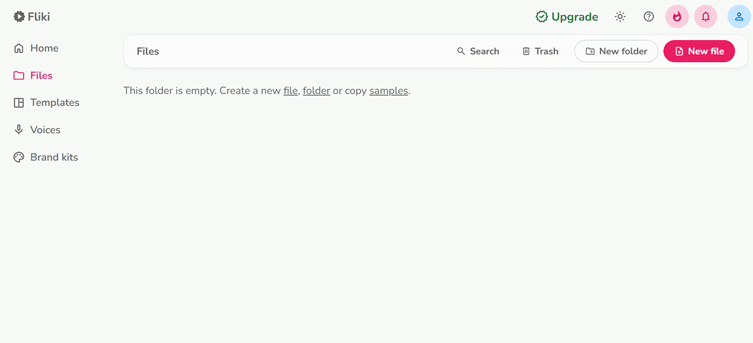
Then you will be asked to select how you want to create your video. Since we want to turn our blog into a video, you should select the URL option.
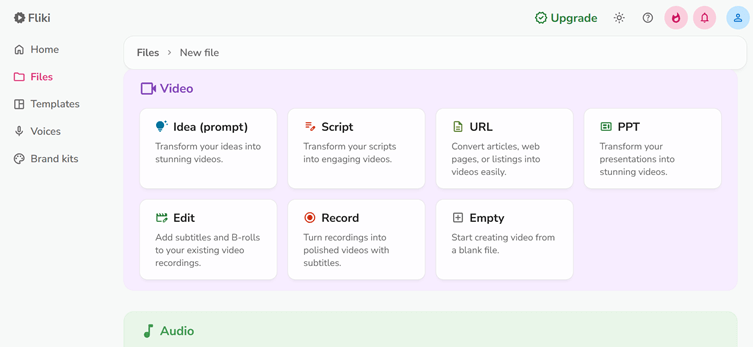
After that add a short prompt ( usually a title of your blog) into the Prompt section and paste the URL of your blog. Don’t forget to tick the “Summerize” checkbox to summarize your blog then hit the “Next” button.
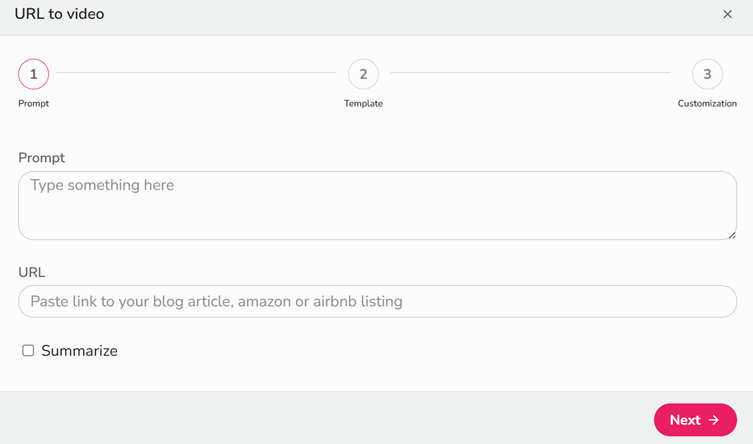
Next, you will be asked to set the duration of your video with the help of a duration slider.
After that, you need to select the media assets you want to include in your video such as Stock media videos, AI media, AI Avatar, Sound effects, Headings, and Stickers. Once you have included all the necessary media in your video, click on the Submit button.
Templates in Fliki
In case you feel like creating a video from scratch is taking your time or it doesn’t interest you, Fliki offers a wide variety of ready-made templates for your videos. These templates come with diverse customization options, advanced layering, animations, time control, and much more to create impressive videos for you.
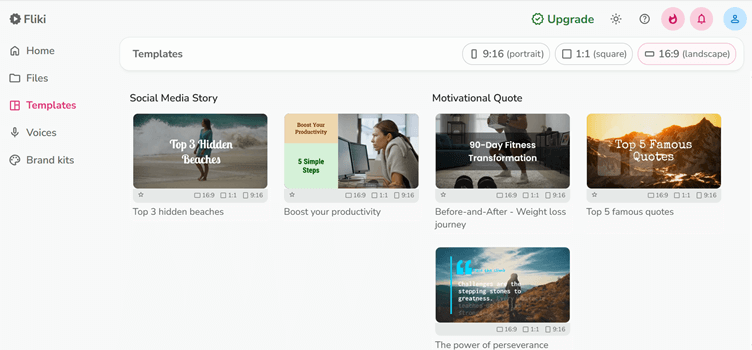
You can also set your brand’s logo, color, theme, and font that reflects your business easily here.
Editing Your Video
Once you have created your video file, either manually or using the template, you should edit it.
You can add voices (from 2000+ voices in 80+ languages), change the background audio by selecting audio from the background audio library, add layers (containing elements like Avatars, Picture-in-Picture, etc), and customize other elements.
Preview and Download Your Video
When you are satisfied with the editing and formatting video, preview the freshly made video precisely. Adjust anything that feels out of the way and then download your video.
Fliki offers several options to export your video with resolution (either in 1080p, 720p, or 360p) and in format (MP4 or MOV).
That's all, Congratulations, you have successfully converted your blog into a Video.
2. Without Using AI Tools
Although there are a lot of AI tools available that allow you to convert your text or audio into video, sometimes they lack the human touch.
So, if you have creative skills, and know about video editing and formatting, you can do this task manually without buying these AI tools subscriptions. This manual approach will help you save money as well as give you more space to add a more personal touch.
To manually create a video out of the blog, you need the script, your voice-over, and stock videos:
Step 01:
The very first thing you are going to do is create the script from your blog. You are not going to simply add every word of the blog but summarize content. Make it conversational by adding a different intro and CTAs.
Step 02:
The next step is to look for stock media videos, you can get free stock videos and images from websites like Pixabay, Pexels, Unsplash, etc.
Step 03:
Then create the slides using any video editing software or use Canva or PowerPoint to create engaging slides using the stock images and videos according to your script.
Step 04:
Once your slides are ready, you need a voice-over of them.
For that, use a high-quality microphone and record your voice. After recording, edit your audio to cancel any noise or disturbance use online audio editing tools like Audacity, etc.
Step 05:
The most crucial step is video editing, for that use professional video editing tools like Adobe Premiere Pro, DaVinci Resolve, etc.
Import your media slide file and your audio file to the video editing software. Then sync the voiceover to all the slides, and add other media assets and elements like animations, transitions, layers, background music, etc.
Step 06:
Upon editing, preview your video to look for any improvements, if you feel everything is up to the mark, export and download the video either in MP4 or MOV form.
Conclusion
Changing your top-performing blog posts into video content is an effective way to extend the life of your already-existing website content. Video content is more engaging and visually appealing compared to plain text.
Videos are not only good for the SEO of your website, but they also improve engagement, increase retention time, and have a wider audience reach. So, if you want to make the best use of your content make videos out of your blog and this article will help you create them easily.
Either use the AI tools or manually convert blog posts into videos, it is your choice.




